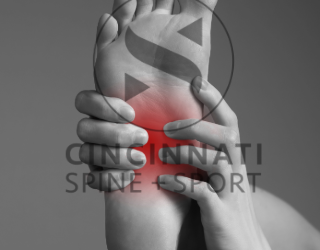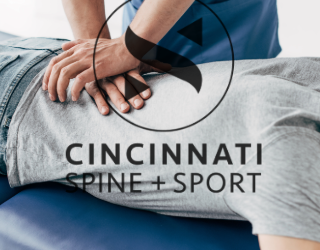Title: Maximizing Running Performance: The Role of Active Release Technique (ART) at Cincinnati Spine and Sport
Introduction:
In the pursuit of peak athletic performance, runners often encounter various hurdles ranging from overuse injuries to muscle tightness. These challenges can impede progress and hinder performance. However, integrating Active Release Technique (ART) into a runner’s training regimen can be a game-changer. At Cincinnati Spine and Sport, we recognize the importance of ART in optimizing runners’ performance and preventing injuries.
Understanding Active Release Technique (ART):
Active Release Technique (ART) is a specialized, hands-on approach to treat soft tissue injuries and conditions. It involves the manipulation of muscles, tendons, ligaments, fascia, and nerves to alleviate tightness, improve flexibility, and restore proper function. ART targets adhesions and scar tissue that form within muscles due to overuse, trauma, or poor posture, which can limit range of motion and cause pain.
Benefits of ART for Runners:
- Improved Range of Motion: Runners often experience tightness in key muscle groups such as the hamstrings, calves, and hip flexors. ART helps break down adhesions and scar tissue, allowing muscles to move freely and efficiently, thus enhancing range of motion and stride length.
- Injury Prevention: Overuse injuries like IT band syndrome, Achilles tendinitis, and plantar fasciitis are common among runners. By addressing muscular imbalances and tissue restrictions early on, ART can prevent these injuries from developing or worsening, enabling runners to maintain consistent training schedules.
- Enhanced Performance: Optimal muscle function is crucial for running performance. ART sessions can enhance muscle recruitment patterns, leading to more efficient movement patterns and improved biomechanics. This can translate to better speed, endurance, and overall performance on the track or trail.
- Faster Recovery: Intense training sessions can leave runners with sore, fatigued muscles. ART promotes faster recovery by increasing blood flow to treated areas, flushing out metabolic waste products, and reducing inflammation. This allows runners to bounce back quicker and resume training with minimal downtime.
Why Choose Cincinnati Spine and Sport for ART?
At Cincinnati Spine and Sport, we prioritize the holistic well-being and performance goals of our clients. Our team of certified ART providers, led by Nick Rohlfs, is dedicated to delivering personalized care tailored to each runner’s unique needs and goals. Whether you’re a recreational jogger or a competitive athlete, we offer comprehensive ART sessions designed to optimize your running performance and keep you injury-free.
Our Approach:
- Comprehensive Assessment: We conduct thorough assessments to identify areas of muscular tightness, weakness, and imbalance specific to running mechanics.
- Customized Treatment Plans: Based on the assessment findings, we develop individualized ART treatment plans to target problem areas and address underlying issues.
- Education and Support: We empower runners with knowledge about proper warm-up techniques, stretching exercises, and self-care strategies to complement ART sessions and maintain optimal performance.
Conclusion:
Incorporating Active Release Technique (ART) into your training regimen can unlock your full potential as a runner by improving flexibility, preventing injuries, and enhancing performance. At Cincinnati Spine and Sport, we’re committed to helping you achieve your running goals with our specialized ART services led by Nick Rohlfs. Experience the difference ART can make in your running journey and elevate your performance to new heights.





